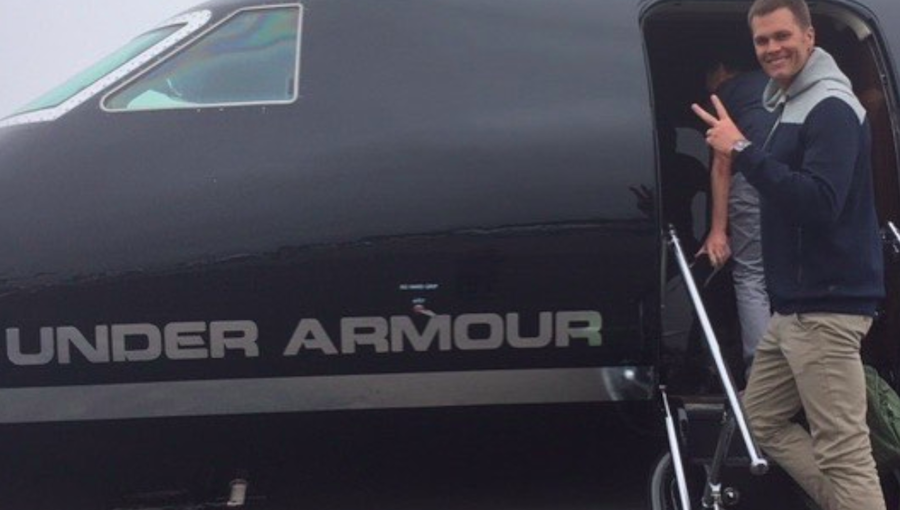Shares of Under Armour fell $3.89, or 23.7 percent, to $12.52, on Tuesday after the company significantly reduced its outlook for the year due to further erosion in its U.S. business and indicated the weakness would likely continue in 2018. Sales in the second quarter also fell short of Wall Street’s targets as sales declined for the first time since the company went public in 2005.
Under the new guidance:
- Sales are expected to rise in the low single digits, compared to a previous forecast of growth of 9-11 percent.
- North America revenue is projected to be down at a high-single-digit rate while its international business is expected to be up 35 percent.
- Apparel and footwear revenue are both expected to grow at a low-single-digit rate.
- DTC revenue is projected to be up at a high-single-digit rate versus a low-single-digit rate decline in wholesale.
- Gross margin is expected to be down approximately 220 basis points compared to 46.4 percent in 2016 as benefits from product costs and channel mix are more than offset by increased efforts to manage inventory within a highly promotional environment, impacts from the restructuring plan and increasing regional mix. Adjusted to exclude restructuring costs, gross margin is expected to be down approximately 190 basis points. Under the previous guidance, gross margins was expected to be down 160 basis points on a reported basis and at least 120 basis points on an adjusted basis.
- Operating income is expected to be approximately $0 to $10 million on a reported basis. Adjusted operating income is expected to reach $140 million to $150 million. Under its former guidance, operating income was expected to range between $160 million and $180 million on a reported basis and $280 million to $300 million on an adjusted basis.
- Adjusted earnings are expected to arrive in the range of 18 cents to 20 cents per share, compared to previous expectations of 37 cents to 40 cents. In 2016, Under Armour earned 45 cents a share.
- Capital expenditures are expected to reach approximately $300 million this year, down from approximately $350 million under its former guidance.
The company had already reduced its guidance when reporting second-quarter results on August 1 when it also announced a comprehensive restructuring program.
On a conference call with analysts, David Bergman, CFO, noted that several challenges facing the company in early August had only worsened over the last three months.
He said that from a distribution perspective, although new North American distribution is exceeding its original expectations, “it’s not enough to offset lower than planned wholesale demand, particularly in the sports specialty channel.” New accounts for the brands have included Kohl’s, DSW and Shoe Carnival.
Internationally, the company is seeing strong growth in all regions and channels. But as noted by Kevin Plank, CEO, on the call, Under Armour remains overly reliant on its North American operations.
He said, “Our North American business predominately on the wholesale side has gotten progressively tougher since the fourth quarter of last year amid a greater retail landscape that remains pinned in a multi-year struggle to evolve past its legacy architecture.”
Plank added that a “confluence of events” in the North American athletic sector, including bankruptcies and store closures, declining productivity, traffic and shifting fashion preferences has contributed to “more than a year-long promotional environment” and the bloated inventories across retail is taking longer than expected to clean up.
Added Plank, “As we look to close out 2017, we do not expect these conditions to improve. And although too early for us to provide an outlook for fiscal 2018, our initial assumptions anticipate continued strength across our international and DTC businesses, contrasting with a difficult environment in our North American wholesale business well into next year.”
Bergman likewise added that while Under Armour’s reworked pricing, segmentation and assortment strategies have put the company “in a better position to compete in this highly promotional environment, demand and service level challenges are expected to negatively impact the balance of the year.”
Patrik Frisk, president and COO, also noted that the company on July 1 implemented a new enterprise resource planning (ERP) system to add efficiencies across point-of-sale, warehouse management, inventory control, merchandising and product allocation systems. Unfortunately, the changeover caused disruption in its supply chain that delayed shipments and caused “a number of change management issues impacting our workforce and manufacturing partners as they adapt to the new platform and processes” to impact third-quarter results and the outlook.
On its direct-to-consumer business, Bergman said continued traffic pressure and a heightened promotional environment, mostly in North America, “caused us to temper our expectations in this channel.”
Finally, Bergman noted that the latest quarter included $29 million of goodwill impairment related to its Connected Fitness business. The goodwill impairment, which was not included in the originally estimated range of restructuring expenses, was a result of the reduction of expected future cash flows for the Connected Fitness business due to a decision to deemphasize certain ancillary revenue streams, including connected hardware and related web and mobile app development.
Adding the goodwill impairment charge, Under Armour now expects to incur approximately $140 million to $150 million of total pre-tax restructuring charges, with substantially all occurring in fiscal 2017. Previously, it had expected the charges to range between $110 million and $130 million.
In the third quarter, earnings slumped 57.7 percent to $54.2 million, or 12 cents a share. In connection with the company’s restructuring plan detailed when it released second-quarter results, the latest quarter included pre-tax costs totaling $89 million comprising of $22 million in cash related charges and $67 million in non-cash charges.
Excluding charges, adjusted earnings were 22 cents, ahead of Wall Street’s consensus estimate of 19 cents although still off from year-ago earnings of 29 cents.
Revenues in the quarter were down 4.5 percent to $1.41 billion due to the ERP implementation challenges and lower North American demand.
Revenue to wholesale customers declined 13 percent to $880 million, reflecting operational challenges in the quarter, as well as lower demand in its North American business, particularly within the sports specialty channel.
Direct-to-consumer revenue was up 15 percent to $468 million with growth in both our retail and e-commerce businesses around the world. DTC in total was 33 percent of global revenue in the quarter. Licensing business grew 16 percent to $34 million, primarily driven by new and expanded licensing relationships within North America.
By category, apparel declined 8 percent to $939.4 million. Growth in golf and sportstyle was more than offset by declines in outdoor, women’s training and youth.
Footwear inched up 2.2 percent to $285.1 million. Strength in running and outdoor offset declines in basketball and youth. Accessories were up 1.4 percent to $123.5 million, led by golf and men’s training, tempered by a decline in outdoor.
By region, sales in the North America region slid 12.1 percent to $1.08 billion and was down 12.3 percent on a currency-neutral basis. The blame was given to “continued promotional conditions, lower overall demand and operational challenges.” Operating profits in the region slumped 64 percent to $65.8 million.
Outside North America, international posted a 35 percent increase in revenue to reach $305 million, or 22 percent of total revenue in the quarter. On a currency-neutral basis, international revenue was up 34 percent.
In the EMEA region, sales rose 21.7 percent to $127.9 million and gained 19.8 percent on a currency-neutral basis. The gain was driven by balanced growth across wholesale and DTC. Growth is coming from expansion in key markets like the U.K. and Germany as well as new market entries like Russia. Earnings in the EMEA region doubled to $17 million from $8.5 million.
In the Asia Pacific region, revenues jumped 51.9 percent to $130.3 million and climbed 53 percent on a currency-neutral basis. The increase was driven by continued strength in China, Australia and Korea. Categories driving the gains included running, training and basketball. Operating income in the region improved 25.9 percent to $34.2 million.
In the Latin America region, sales rose 32.8 percent to $46.9 million and added 23.4 percent on a currency-neutral basis. Balanced growth came in its DTC and wholesale channels across the key markets of Mexico, Brazil and Chile. The operating loss in the Latin America region shrunk to $10.2 million from $10.6 million.
In the Connected Fitness segment, sales climbed 15.9 percent to $23.4 million, driven primarily by new partner relationships. Connected Fitness showed an operating loss of $44.6 million after the impairment charge against a loss of $8.5 million a year ago.
Companywide gross margin declined 160 basis points in the quarter to 45.9 percent as benefits from changes in foreign currency rates and product costs were more than offset by pricing and other inventory management initiatives, and regional mix. Adjusted gross margin, which excludes a $4 million impact from restructuring efforts, was 46.2 percent, a decrease of 130 basis points compared to the prior year.
SG&A expense was flat compared to the prior year, better than planned due primarily to expense management efforts, lower incentive compensation expense, and timing shifts in marketing and other expenses to the fourth quarter.
Third quarter operating income was $62 million, down from $199.3 million a year ago. Excluding the restructuring, adjusted operating income was $151 million.
On the call, Plank noted that Under Armour is being impacting by many macro challenges that are impacting many others across retail. These include “geographic variance, retail disruption, competitive undercurrents and changing consumer preferences.”
However, while grappling with a “tough conditions in our largest market,” Under Armour is also facing “complexities” due to its rapid growth.
Plank noted that the company is “well underway” with a strategic transformation designed to “simplify its go-to-market, correct our inefficiencies and take advantage of the scale and infrastructure we’ve built to better serve our consumers.”
The category management structure being developed includes distinct leaders, strategies and teams to improve speed-to-market, consumer connectivity and innovation.
Said Plank, “Our eyes are wide open and we’re well invested in the strategies that will leverage our strength to emerge stronger, faster and leaner, but this will take some time. In 2017 and 2018, as we work to reset and strengthen our underlying business, we have three main goals: operate, fuel and innovate.”
Photo courtesy Under Armour
















